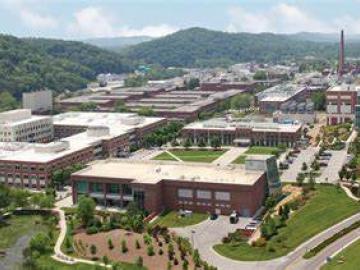Filter News
Area of Research
- Advanced Manufacturing (21)
- Biological Systems (1)
- Biology and Environment (39)
- Building Technologies (1)
- Clean Energy (142)
- Computational Biology (2)
- Computational Engineering (2)
- Fusion and Fission (8)
- Fusion Energy (7)
- Isotopes (5)
- Materials (46)
- Materials for Computing (9)
- Mathematics (1)
- National Security (7)
- Neutron Science (21)
- Nuclear Science and Technology (17)
- Nuclear Systems Modeling, Simulation and Validation (1)
- Supercomputing (27)
- Transportation Systems (2)
News Type
News Topics
- (-) 3-D Printing/Advanced Manufacturing (106)
- (-) Advanced Reactors (29)
- (-) Biomedical (54)
- (-) Clean Water (28)
- (-) Molten Salt (8)
- (-) Transportation (85)
- Artificial Intelligence (78)
- Big Data (43)
- Bioenergy (85)
- Biology (92)
- Biotechnology (19)
- Buildings (45)
- Chemical Sciences (52)
- Climate Change (85)
- Composites (23)
- Computer Science (171)
- Coronavirus (45)
- Critical Materials (22)
- Cybersecurity (34)
- Decarbonization (63)
- Education (3)
- Element Discovery (1)
- Emergency (2)
- Energy Storage (98)
- Environment (175)
- Exascale Computing (31)
- Fossil Energy (4)
- Frontier (34)
- Fusion (49)
- Grid (56)
- High-Performance Computing (74)
- Hydropower (11)
- Irradiation (2)
- Isotopes (44)
- ITER (7)
- Machine Learning (41)
- Materials (128)
- Materials Science (117)
- Mathematics (6)
- Mercury (12)
- Microelectronics (2)
- Microscopy (46)
- Nanotechnology (54)
- National Security (49)
- Net Zero (10)
- Neutron Science (119)
- Nuclear Energy (92)
- Partnerships (37)
- Physics (53)
- Polymers (27)
- Quantum Computing (28)
- Quantum Science (61)
- Renewable Energy (2)
- Security (22)
- Simulation (39)
- Software (1)
- Space Exploration (24)
- Statistics (2)
- Summit (55)
- Sustainable Energy (110)
- Transformational Challenge Reactor (7)
Media Contacts

Groundwater withdrawals are expected to peak in about one-third of the world’s basins by 2050, potentially triggering significant trade and agriculture shifts, a new analysis finds.

Rishi Pillai and his research team from ORNL will receive a Best Paper award from the American Society of Mechanical Engineers International Gas Turbine Institute in June at the Turbo Expo 2024 in London.

ORNL’s Omer Onar and Mostak Mohammad will present on ORNL's wireless charging technology in DOE’s Office of Technology Transitions National Lab Discovery Series Tuesday, April 30.

ORNL’s Erin Webb is co-leading a new Circular Bioeconomy Systems Convergent Research Initiative focused on advancing production and use of renewable carbon from Tennessee to meet societal needs.

ORNL researchers are working to make EV charging more resilient by developing algorithms to deal with both internal and external triggers of charger failure. This will help charging stations remain available to traveling EV drivers, reducing range anxiety.

Scientists at ORNL have developed 3D-printed collimator techniques that can be used to custom design collimators that better filter out noise during different types of neutron scattering experiments

The Department of Energy’s Oak Ridge National Laboratory is providing national leadership in a new collaboration among five national laboratories to accelerate U.S. production of clean hydrogen fuel cells and electrolyzers.
ORNL scientists have determined how to avoid costly and potentially irreparable damage to large metallic parts fabricated through additive manufacturing, also known as 3D printing, that is caused by residual stress in the material.

Researchers at ORNL are taking cleaner transportation to the skies by creating and evaluating new batteries for airborne electric vehicles that take off and land vertically.

A team of researchers at ORNL demonstrated that a light-duty passenger electric vehicle can be wirelessly charged at 100-kW with 96% efficiency using polyphase electromagnetic coupling coils with rotating magnetic fields.




